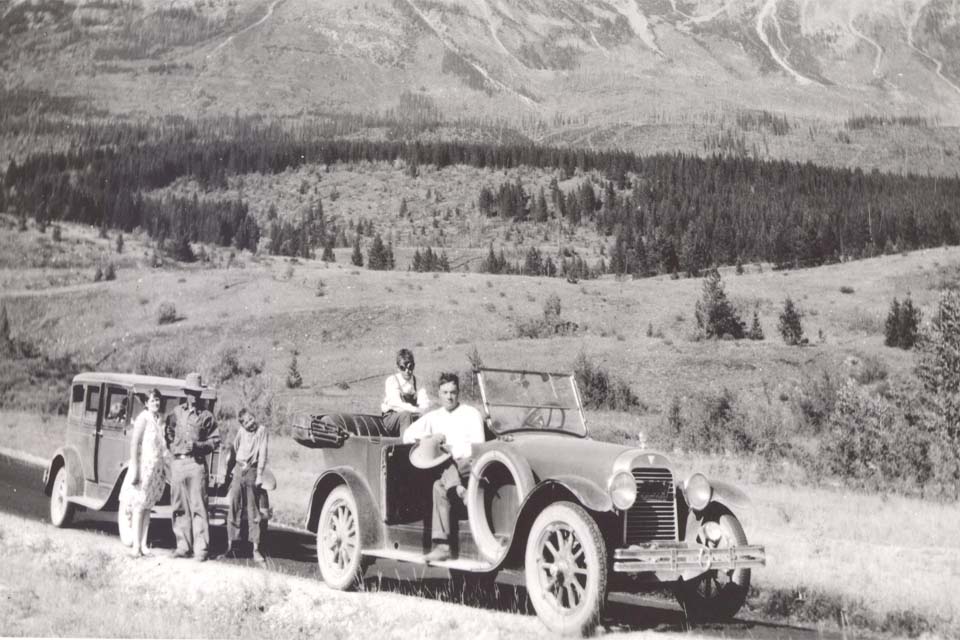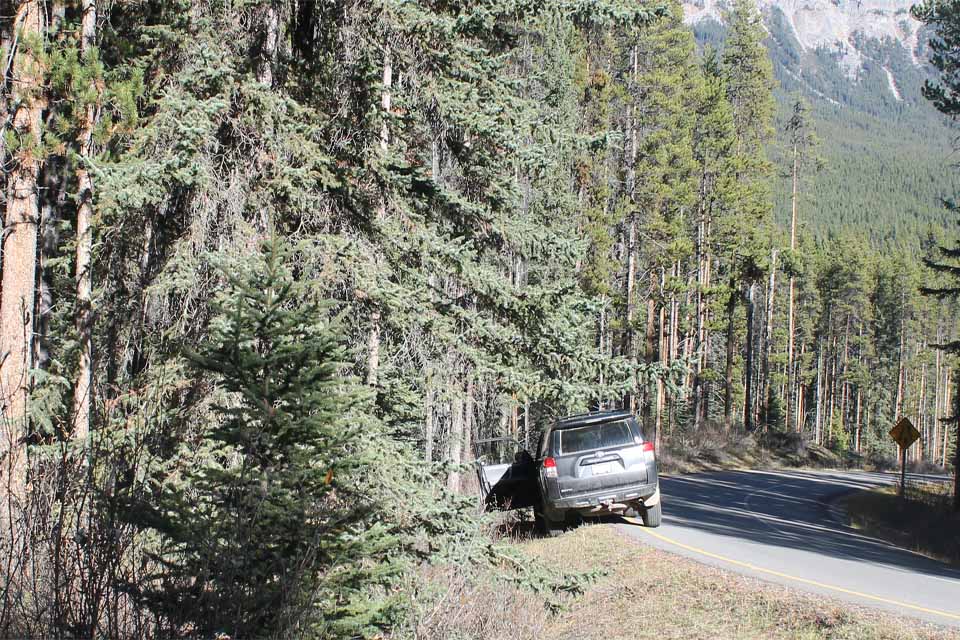Relocating the old photograph was a 3-decade project made difficult by the ridgeline of Castle Mountain not being visible, and deceptively, given the lay of the Rockies, there is an illusion that the cars were going in a south-eastward direction whereas the old road makes a sharp bend here, and the motorists were actually headed northwest towards Lake Louise. After many years of looking at the old photo, passing through the Bow Valley area nearly every week, and unconsciously mentally-registering the pattern of the washes and scree slopes in the background, seeing the old, un-located photograph in my files was becoming an irritation. However familiar the scene, the location could actually have been anywhere between Jasper and Crowsnest Pass. Also, given the open-vegetation cover, it seemed that the road might even be along the base of the eastern front of the Rockies. Finally, in desperation, I started plotting out the actual years that the government’s of Canada and Alberta built and then paved roads. While looking at an old road map for the Bow Valley, the photograph’s potential location finally “clicked”, and on a nice day in September, 2021, after a bit of field work, this minor mystery was finally solved.
The Bow Valley in this area was on a 50-100 year fire cycle for the 5-century period prior to the 1930s, resulting in a patchy habitat of young lodgepole pine and small meadows and shrublands. Most burns were lit by indigenous people during relatively cool and moist conditions. Today, like many other areas in the Canadian Rocky Mountains, this region is on a fire cycle of >500 years. Removing indigenous people’s burning patterns, and suppressing all fires while they are small is creating large areas of aged lodgepole pine. These old, dense forests are susceptible to mountain pine beetle infestations that create high fuel biomass as dead trees fall to the forest floor. Eventually, during a year of drought, a small fire will escape initial attack during extreme, mid-summer burning conditions, and the landscape will experience a unique, but not unexpected event– a valley-wide conflagration from a large and intense wildfire.

